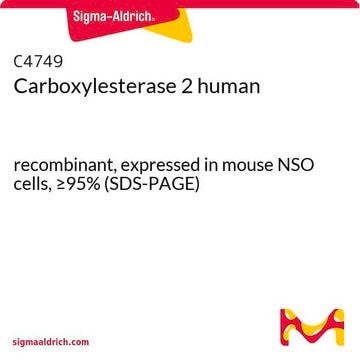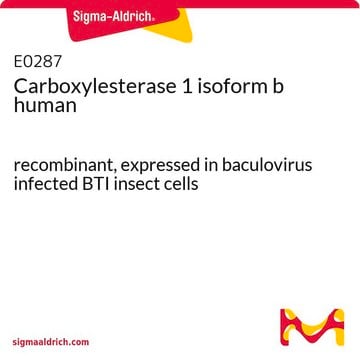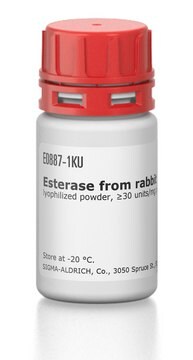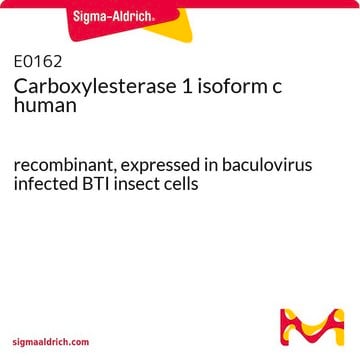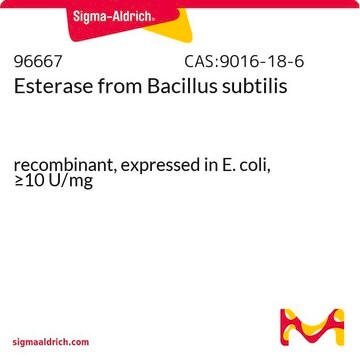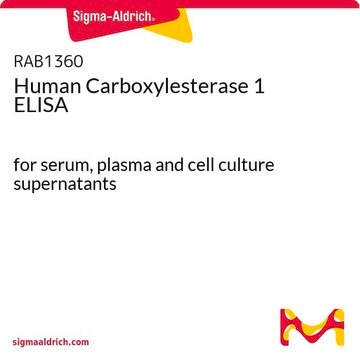E0412
Carboxylesterase 2 human
recombinant, expressed in baculovirus infected BTI insect cells
Synonyme(s) :
Carboxylesterase 2 human, CES2, CES2A1
About This Item
Produits recommandés
Produit recombinant
expressed in baculovirus infected BTI insect cells
Niveau de qualité
Forme
liquid
Activité spécifique
≥500 units/mg protein
Poids mol.
60 kDa
Poids
(0.5 ml)
Conditions d'expédition
dry ice
Température de stockage
−70°C
Vous recherchez des produits similaires ? Visite Guide de comparaison des produits
Description générale
Application
- in the in vitro enzyme-based inhibitor screening assay
- in substrate selectivity assay with emission ratiometric two-photon probe (SE1)
- as a reference standard in the enzyme assay with various 4-nitrophenyl and 1-naphthyl based substrates
Actions biochimiques/physiologiques
Définition de l'unité
Code de la classe de stockage
10 - Combustible liquids
Classe de danger pour l'eau (WGK)
nwg
Point d'éclair (°F)
Not applicable
Point d'éclair (°C)
Not applicable
Certificats d'analyse (COA)
Recherchez un Certificats d'analyse (COA) en saisissant le numéro de lot du produit. Les numéros de lot figurent sur l'étiquette du produit après les mots "Lot" ou "Batch".
Déjà en possession de ce produit ?
Retrouvez la documentation relative aux produits que vous avez récemment achetés dans la Bibliothèque de documents.
Les clients ont également consulté
Notre équipe de scientifiques dispose d'une expérience dans tous les secteurs de la recherche, notamment en sciences de la vie, science des matériaux, synthèse chimique, chromatographie, analyse et dans de nombreux autres domaines..
Contacter notre Service technique